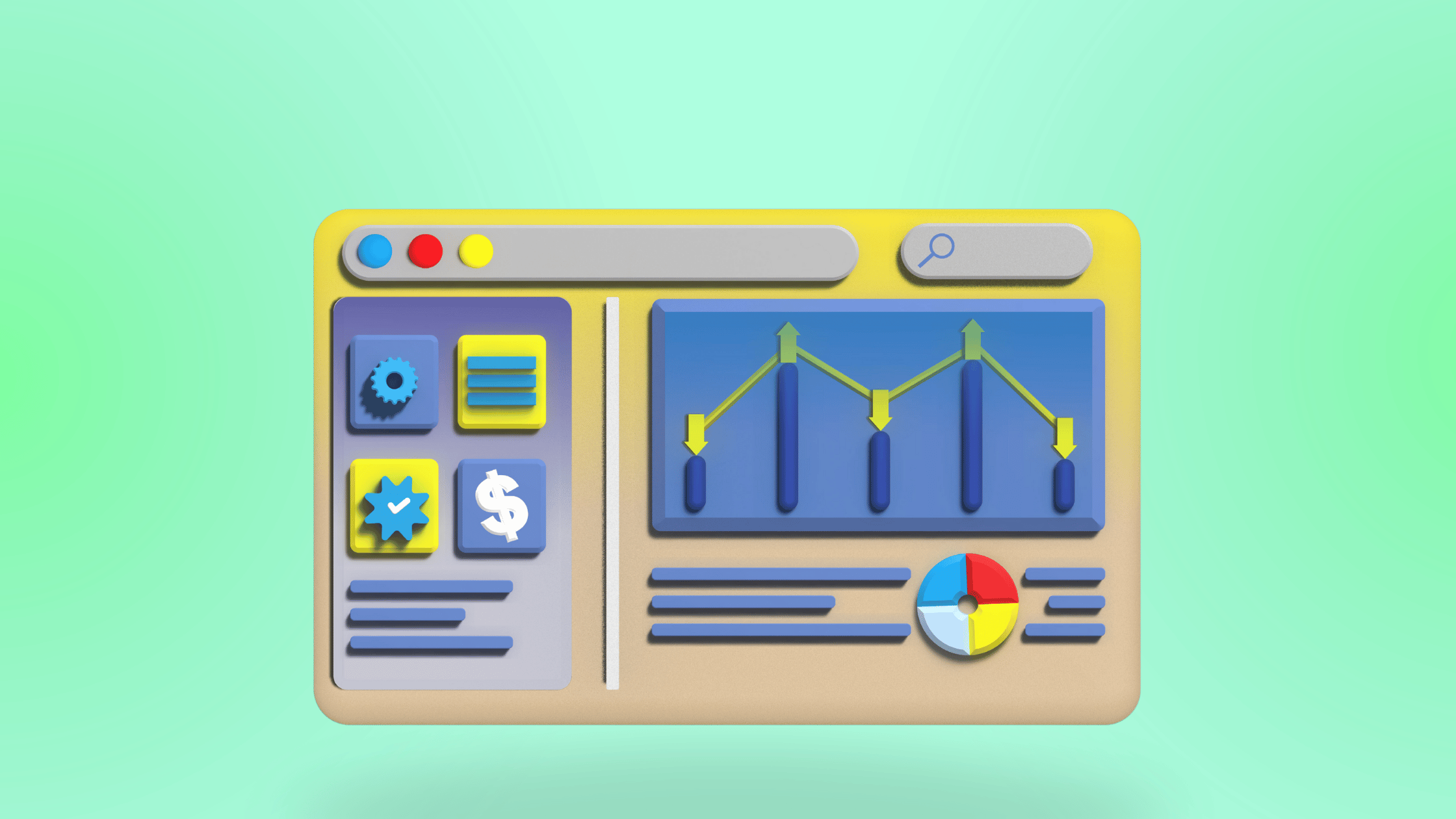LinkedIn is undoubtedly one of the biggest social media platforms that currently exist. The platform boasts 875 million members, and users only increase daily. While the platform is primarily used for networking by individuals and businesses alike, it also provides an excellent opportunity to understand, track, and engage with potential customers. This method of listening to conversations related to one’s business or product is known as “social listening.”
B2B and B2C businesses can benefit significantly from social listening on LinkedIn. But what exactly is social listening, and how can it help make the most of LinkedIn? Let’s find out.
Social Listening For LinkedIn, in simple words, it is the practice of monitoring conversations on the platform, such as those related to one’s brand or industry. It is also used to track competitors and understand the sentiment of a given audience.
Read more: Stay ahead in your game with 6 Social Listening Trends to watch out for in 2023.
Let’s look at a simple example to understand what social listening on LinkedIn is.
Suppose a brand is looking to launch a new product. To understand the reception of their potential customers, they can monitor conversations on LinkedIn around the same topic. This will give them insights into what people are saying about their idea and whether it’s good.
Similarly, let’s say that a rival is seeing unprecedented growth while our brand is not. We can also use social listening to track their strategies, which may help us identify potential opportunities and strategize our plans accordingly.
Why Use Social Listening On LinkedIn?
Businesses primarily rely on other social media platforms like Twitter and Instagram to understand customer sentiments. However, LinkedIn stands out because it brings a unique set of benefits that other platforms do not offer. Let us look at why we must use social listening on LinkedIn.
1. Large User Base
As mentioned earlier, LinkedIn boasts 875 million members, and the number is only increasing. This makes it a great platform for understanding customer sentiment on a large scale. With the right tools and social listening strategy in place, we can uncover valuable insights about our market and customers.
2. High Volume Of Conversations
There are millions of posts uploaded to LinkedIn every day, and while the majority of them are business-related conversations, they can give us an understanding of customer sentiment. We can also track conversations about our industry, competitors, and more.
3. High Engagement Rates
Unlike other platforms where engagement is low, LinkedIn boasts an average engagement rate of 3.16%, which is much higher than other platforms. This allows us to tap into conversations happening on the platform and get more meaningful insights.
4. Highly Targeted Audience
Another advantage that LinkedIn offers is a highly targeted audience. Unlike other social media platforms, LinkedIn is more likely to be used by professionals with higher education and income. This makes it easier to target an audience that is more likely to be interested in our product or service.
5. Real-Time Insights
Lastly, the platform offers real-time insights into what people are thinking and saying about our brand or product. This can be extremely useful in identifying trends early on and potentially taking preemptive action before it’s too late.
Don’t Miss out on 20 Benefits of Using Social Listening Tools for Your Business.
Social Listening on LinkedIn – How Do We Do That?
The process of social listening on LinkedIn can seem daunting at first, but it’s quite simple with the right tools in place. Here’s a brief step-by-step guide on how to do social listening for LinkedIn:
1. Identify Listening Goals
Before we start listening, we need to define our goals. Are we looking to understand our audience better, monitor our brand reputation, or find new leads? Knowing the goals will help us focus our efforts and make our social listening more effective.
The goals can vary depending on the business’s needs, but they should always be measurable and have a clear timeline.
Let’s say you’re a recruitment agency that wants to improve your employer branding on LinkedIn. Your goal is to understand what candidates are looking for in an employer and what they’re saying about your brand.
Identifying your listening goals will help you because it will help you focus your efforts and make your social listening more effective. By defining your goals, you know what you’re looking for and can create search queries that are relevant to your specific needs. In this example, you would want to monitor conversations related to employment, job search, and job satisfaction.
You could use a social listening platform to monitor keywords related to these topics and analyze sentiment to understand how people feel about your brand.
Learn more on 11 ways in which Social Listening is helpful for your business.
2. Join Groups On LinkedIn With Users Interested In Our Industry
As per LinkedIn, “LinkedIn Groups provide a place for professionals in the same industry or with similar interests to share their insights and experiences, ask for guidance, and build valuable connections.”
We can leverage these groups to gain valuable insights into customer sentiment. Joining industry-specific groups such as marketing, retail, or beauty can give us an understanding of what people are talking about in our industry and how they feel about certain topics.
By using the right keywords, hashtags, or phrases related to our product or industry, we can track conversations on specific topics and gain valuable insights into customer sentiments.
For example, if we are operating in the automobile industry, we can use keywords like “cars” or “trucks” to track conversations related to our industry. Similarly, suppose we want to follow a specific product, like a new hybrid car, in India. In that case, we can use hashtags or phrases such as “hybrid cars India” or “eco-friendly vehicles India.”
This will help us get an understanding of customer sentiment and gauge the success of our product or service.
The process of finding and joining groups is relatively simple. All we need to do is search for relevant groups on the platform at the top of the homepage and request to join them. We can also ask our existing customers or followers to join specific groups we have created, thus helping us get more engagement.
3. Build Reputation
Authoritative content posted on LinkedIn can be extremely useful in building a solid reputation for our brand. We can post informative and authoritative pieces such as blog posts, infographics, case studies, or even videos related to our product or service.
By doing so, we can show that we are knowledgeable and reliable, which will ultimately help us gain more customers.
We can also engage with questions and comments posted by other users on our content to show that we are actively listening and responding to customer queries. This can also help us get an understanding of how customers feel about our product or service and what their expectations are.
Engaging in conversations with customers can also build relationships and show that our brand is customer-centric. This will help us build our reputation and gain more customers.
Wanna learn the 4 types of Online Reputation Management?
4. Adjust The Newsfeed
The newsfeed is the cornerstone of any social media platform. We can find the latest conversations and trends in our target industry or topic. On LinkedIn, we can customize our newsfeed to our liking, which will help us keep track of conversations related to our product or service.
To customize the newsfeed on LinkedIn, we need to search for our desired hashtags or topics in the search bar and then click on follow. This will ensure that any conversations related to the topic appear on our newsfeed. We can also use LinkedIn’s algorithm to get more relevant discussions and updates from people we trust or follow.
All we need to do is interact more often with content we like, and LinkedIn will start to show us more relevant recommendations in the newsfeed. Another strategy we can use is to comment on or like posts from influencers in our industry. This will help us in getting more visibility and engage with potential customers.
5. Perform A Strong Search
Millions of posts are uploaded on LinkedIn every single day. So, tracking conversations related to our product or service cannot be easy. This is where the search bar comes in handy.
We can search for conversations related to our product or service using the right keywords. For example, if we want to track conversations about a new phone model, we can type in keywords like “new phone model” or “phone reviews.” This will give us an overview of what people say about the product and how they feel.
We can also use advanced filters to make our search more specific. For example, if we want to track conversations only from the USA, we can select this filter and narrow our search results. Similarly, if we are looking for customers who have purchased our product recently, we can also filter for that.
However, we recommend using a robust social listening tool that can search and track customer sentiments and provide deeper insights into the conversations. This will help us better understand the customer sentiments related to our product or service.
6. Measure Brand Health
In simple terms, brand health refers to how well customers receive our product, service, or company. It is important to measure brand health because it helps us identify any potential issues related to customer service, product quality, or any other concerns that our customers might have.
Let’s assume we want to measure the brand health of our new software update. We can use social listening on LinkedIn to track the conversations related to our product and then measure these conversations’ negative and positive sentiments. This will help us understand how our customers feel about the update and if any areas need to be improved.
We can also monitor any customer complaints related to our product or service and address them quickly and efficiently. This will help us improve our customer service and gain more customer trust.
Considering the above example, if several users complain about their batteries draining quickly after updating their phones, we can quickly release a new version of the update that resolves the issue. This will help build healthier relationships with our customers and improve brand health in the long run.
7. Use A LinkedIn Social Listening Tool
Collecting all metrics and insights related to our product or service through LinkedIn can take time and effort. We may spend hours of manual effort collecting all that data.
This is why it is important to have a powerful, agile, and robust social listening tool that can help us collect real-time data and insights related to our product, service, or company.
The right social listening tool should be able to track conversations on LinkedIn. It should also be able to track customer conversations on other social media channels like Facebook, Instagram, and Twitter.
Moreover, the tool should provide the collected data in a unified dashboard that is easy to read, understand, and interpret. This will help us understand customer sentiments related to our product or service easily and quickly.
Lastly, the tool needs robust data analytics capabilities that can help us uncover hidden trends and insights. This will help us make more informed decisions about our product, service, or company.
For example, if we are tracking conversations related to our new service launch, the tool should be able to uncover hidden trends, such as what features of the product customers like the most and what features they don’t like. This will help us improve the service and provide a more enjoyable experience for our customers.
What Social Engagement Metrics can be Collected On LinkedIn?
Various social engagement metrics can be collected on LinkedIn, such as post views, likes and shares, comments, page views, and link clicks. All these metrics can be used to measure the success of our product or service launch on LinkedIn and to track customer sentiment related to it. Let us look at them in detail.
1. Post Views
This is one of the most basic and important metrics to collect on LinkedIn for social listening. This metric provides us with how many times people on LinkedIn have viewed our post. With this metric, we can understand how effective and engaging our content is on LinkedIn.
2. Likes and Shares
This metric helps us understand how often our posts are liked or shared by users on the platform. This metric helps us gain an understanding of our post’s reach and popularity on LinkedIn.
3. Comments
This metric tells us how many people commented on our post. This metric is important as it gives us an insight into how many people are engaged with our content and their thoughts and opinions about it.
4. Page Views
This metric provides us with the number of unique users who visited our LinkedIn page. This helps us understand how many people are interested in our company and its products and services. It also helps us understand our page’s visibility on the platform.
5. Link Clicks
This metric provides us with insights into how many people clicked on our post’s links. This metric gives us an understanding of how effectively our link is performing on LinkedIn and whether users are clicking through to take action from it.
6. Reaction Types
In 2019, LinkedIn added reaction types in the form of emojis. This helps us look deeper into customer reactions and understand how our posts perform. Users can like, laugh, support, thank, celebrate, and love our posts. This helps us gain insights into customer sentiment and engagement with our content.
How can social listening on LinkedIn help our brand?
So now that we have understood what social listening on LinkedIn is, how can we do social listening on LinkedIn, and what metrics can be measured?
Let us understand how social listening on LinkedIn helps our brand.
1. Brand Monitoring
With social listening on LinkedIn, we can find out how our brand is being talked about. We can track mentions of our brand and its products or services, allowing us to analyze customer sentiment and make improvements accordingly. Utilizing this will help our business capture more leads and potential clients.
Here are some 14 Social Media Monitoring tools for marketing teams.
2. Become Authoritative Leaders
Social listening on LinkedIn also helps us become an authoritative voice in our industry. Thought leadership is more important than ever in this competitive landscape, and social listening on LinkedIn allows us to share our knowledge and expertise. This helps us establish ourselves as leaders in our industry, thus increasing our visibility and credibility on the platform.
3. Personalize Content
Social listening also helps us personalize our content as we can better understand our customers’ interests and needs. We can create content based on the feedback collected from our customers, thus providing a truly personalized experience. This will help us build a stronger connection with our customers and improve their trust in our brand.
Moreover, we can also fine-tune our upcoming products or services based on the feedback gathered from social listening on LinkedIn. This will help us create more appealing and relevant products or services, thus improving our chances of success.
Use Social Listening Tools for a personalized outreach strategy.
How to implement a LinkedIn social listening strategy?
Creating an optimal social listening strategy for LinkedIn can seem daunting, but it isn’t. Here are some quick steps to get started:
1. Determine the Goals
We need to know our goals to be able to measure the success of our strategy. So it is essential to identify and set measurable objectives to track and analyze. We must determine which metrics are critical to our business and focus on them.
2. Define What We Need to Listen to
Once we have identified our goals, we need to determine what we need to listen to. On LinkedIn, this could include tracking competitor activity or following a particular hashtag to identify customer sentiment. We can also create a list of keywords related to our business and track them on LinkedIn.
Some metrics we recommend listening to on LinkedIn are:
- Our brand name and other mentions related to our brand, product, and services.
- Common misspellings associated with our brand. For example, if our brand name is Facebook, we need to track mentions of “Facebook” or “Facebook.”
- Industry-specific terms, hashtags, and keywords related to our business.
- Competitor mentions of our brand.
- Hashtags related to our brand, marketing campaigns, and promotions.
3. Analyze the Data
Once we have identified what we should be listening to, we must analyze the data collected from our social listening efforts. We can use this data to gain insights into customer sentiment, track competitor activity, and adjust our content accordingly.
Based on the analysis, we can better adjust our content and marketing strategies to suit customer needs. We can also identify new opportunities that we can capitalize on. We need to invest in the right tools that can help us analyze data efficiently.
4. Adapt and Implement
Once we have identified the opportunities, it is time to adapt our strategies and implement the changes. This might include creating new content, adjusting our keywords for better search visibility, or introducing a new product or service based on customer feedback.
The Benefits Of Social Listening on LinkedIn
The benefits of LinkedIn social listening are numerous. These include:
1. Gaining Insights Into Customer Sentiment and Preferences
The biggest benefit of social listening on LinkedIn is that it helps us better understand our customers. We can track their interests, needs, and preferences and tailor our content and strategies accordingly. This, in turn, will help us build stronger relationships with our customers.
2. Identifying New Opportunities
Social listening also helps us identify new opportunities for our business, such as new markets or emerging trends. We can use this data to adjust our marketing strategies accordingly and capitalize on these opportunities.
3. Increasing Visibility and Credibility On The Platform
Credibility and visibility are two crucial factors on LinkedIn. By engaging with customers through social listening, we can increase trust in our brand and reach out to new potential audiences. This will help us grow and expand our business in the long run.
4. Personalizing Content To Suit Customer Needs
Nowadays, personalization has become an integral part of marketing campaigns. With social listening, we can identify customer behavior and preferences to create highly targeted content that appeals to them. This will help us build stronger relationships and increase customer satisfaction.
For example, suppose a customer likes a particular topic. We can use social listening to track their interests and create content focused on that specific topic. This will help show customers that we care about their interests and preferences.
5. Improving Our Products And Services Based On Feedback
It has never been easier to get customer feedback, thanks to the various digital platforms available. Social listening is a great tool for tracking customer feedback, both positive and negative. We can use this data to improve our products and services and make sure that every customer has a great experience with our brand.
6. Creating A Stronger Connection With Customers And Building Trust In Our Brand
The customer is at the heart of any business, and social listening helps us create a strong connection. We can engage with our customers, understand their needs and preferences, and build trust in our brand. This will help us build strong relationships and increase customer loyalty.
Social Listening Mistakes to Avoid
Many businesses unknowingly commit mistakes when it comes to social listening. Here are some of the most common mistakes to avoid:
1. Not Having A Proper Strategy In Place
Having a proper social listening strategy is essential for success. Without one, businesses risk missing out on valuable insights and opportunities. So, planning a strategy that includes both short-term and long-term goals is important.
The short-term goals should include actionable insights that can be implemented immediately. The long-term goals, however, should focus on building a solid customer base and increasing customer loyalty.
2. Not Responding To Customer Feedback
Engaging with customers is an essential part of social listening. Failing to respond to customer feedback can damage our brand’s reputation and make customers frustrated and dissatisfied. So, it is essential to actively engage with customers and respond to their feedback promptly.
3. Not Tracking The Right Metrics
Tracking the wrong metrics can be costly for businesses. The most important metrics to track are customer satisfaction and engagement. This will help us identify trends in customer behavior and make necessary changes in our strategy accordingly.
4. Not Taking Action On The Insights
Social listening can provide valuable insights, but it is important to act on these insights. Otherwise, all our efforts will go in vain. We can use the data collected to make informed decisions that will help us grow our business and reach new audiences.
5. Not Investing In The Right Tools
Social listening requires the right tools to be successful. Investing in high-quality social listening and analytics tools will help us get accurate data and insights that can be acted upon. This will help us make the most of our social listening efforts and maximize our return on investment.
How to Choose the Right Social Listening Tool For LinkedIn
There are a plethora of social listening tools available on the market. Selecting the right tool for our business can be a daunting task. But it is important to take our time and choose the best one for our business.
Here are some tips to help make the right choice when selecting a social listening tool for LinkedIn:
1. User-friendliness
A social listening tool should be easy to use and user-friendly. Some tools may have a steep learning curve, while others may be more intuitive and straightforward to use. Choose a tool that is easy to navigate and doesn’t require extensive training to use effectively. A user-friendly tool can save you time and resources in the long run.
2. Check The Features
When selecting a social listening tool, it is essential to check the features offered by each tool. Do they provide data visualization and insights? Are there any custom reporting options available? Does the tool offer sentiment analysis or multi-language support? Evaluating the features of each tool will help us determine which is best suited for our business.
Some of the necessary features we should look for in a LinkedIn social listening tool include:
- Sentiment analysis
- Multi-language support
- Profile/page monitoring
- Trend tracking
- Customizable reports
Moreover, if we have specialized needs, it is best to check if the tool can fulfill them. We will take a detailed look at the essential features later on.
3. Compatibility with LinkedIn
It’s crucial to choose a tool that is compatible with LinkedIn because not all social listening tools support all social media platforms. LinkedIn has its own unique set of features and analytics that require a tool specifically designed for it. Make sure the tool you choose can monitor and analyze conversations on LinkedIn.
4. Check the Customer Support Offered
We should always check the customer support offered by the social listening tool we are considering. Does it offer any tutorials or onboarding support? Are there any customer support forums or helplines available?
Checking the customer support available will help us determine if we can get the necessary assistance if something goes wrong. Also, check the terms and conditions of service to ensure that we have complete control over our data.
5. Read Reviews and Testimonials
Reading reviews and testimonials from existing users is a great way to determine if the tool will be beneficial for our business or not. This will give us an idea about the reliability and effectiveness of the tool.
Moreover, check whether businesses in our industry are using the tool or not. If they have had success with it, then there is a greater chance of us having success too. While this is not a guarantee, it is an important factor to consider.
6. Compare Prices
The cost of social listening tools can vary depending on their features and functionality. It is important to compare the pricing of different tools and choose the one that fits our budget. We need to be sure to read the terms and conditions carefully and check if the price includes any additional expenses. We need to ensure that we get the best value for our money by getting the features we need at a price that is within our budget.
7. Omnichannel Monitoring
The tool should be able to monitor social media platforms, websites, blogs, forums, and other online channels, apart from LinkedIn, where customers can share their views. This will help us get an overview of the conversations happening across multiple channels.
8. Data Capture
The tool should allow us to capture data from different sources and centralize it in one location. This will help us analyze the data and make more informed decisions. For example, it should allow us to capture customer feedback from various sources and combine this data with other metrics.
9. Real-time alerts
The tool should be able to alert us in real time if conversations are happening about our brand or product. This will help us take quick action and respond accordingly.
10. Analytics and reporting
The tool should have analytics and reporting capabilities to help us draw insights from the data we have collected. It should allow us to generate reports and analyze the performance of our campaigns. This will help us make informed decisions to improve our marketing strategies.
Finally, it is important to remember that social listening is a continuous process. So, it is important to keep track of the latest developments in social listening tools and upgrade our social listening tools when necessary. This will help us stay ahead of the competition and optimize our efforts for maximum results. As long as we choose the right tool, invest in it, and act on our findings, social listening can be a powerful tool to help us grow our business.
Here are the 10 important factors for selecting the Best Social Listening Tool for your business.
Other Platforms to Consider For Social Listening Apart From LinkedIn
While LinkedIn is one of the most popular platforms for social listening, several other platforms should also be considered.
Facebook: Facebook is a great platform for listening to conversations related to our brand and products. Facebook groups can also be used to find out what users are saying about specific topics.
Twitter: Twitter is one of the best platforms for tracking conversations in real-time. It can be used to monitor customer sentiment and respond quickly.
YouTube: YouTube is a great platform for tracking conversations about our brand and products, as well as for monitoring customer behavior.
Forums: Popular forums can be a great source of information about customer opinions and feedback. It is important to keep track of conversations happening in these forums to get an understanding of the customer’s perspective.
Blogs: Blogs are a great source of information about the latest trends and developments in the industry, as well as customer sentiment. It is important to monitor blogs regularly to stay on top of industry news and customer feedback.
Wrapping up
Social listening is an essential tool for businesses that want to stay competitive in today’s digital world. LinkedIn provides a great platform for us to gain insights about our target audience and engage with them.
It is important to select the right social listening tool for our business to gain valuable insights and maximize our return on investment. By understanding our needs, and comparing features, prices, and reviews, we can make the right choice for our business. Moreover, it is important to stay updated with the latest social listening tools and upgrade them when necessary. With the right tool, we can use social listening to great effect and grow our business.
Konnect Insights is an omnichannel customer experience platform that helps businesses monitor their brand’s online reputation and track relevant conversations across social media platforms, including LinkedIn. Its features include real-time monitoring, sentiment analysis, competitive analysis, and custom reporting.
The tool allows businesses to track keywords, hashtags, and mentions related to their brand and industry in real-time, categorize mentions as positive, negative, or neutral, compare their brand’s performance against competitors, and create custom reports and dashboards.
Konnect Insights is a valuable asset for businesses looking to improve their social media presence and drive their marketing efforts forward.
Get in touch with us if you are looking for a social listening tool to help you monitor your brand’s online reputation and track relevant conversations on LinkedIn. Our team can provide a personalized demo and answer any questions you may have to help you determine if Konnect Insights is the right tool for your business.






























